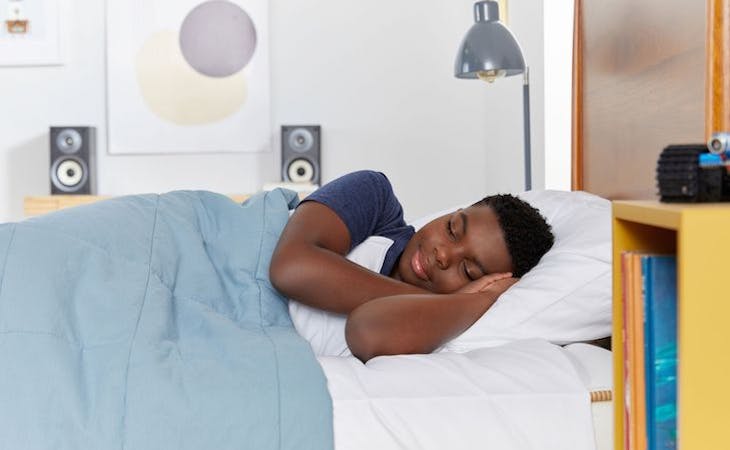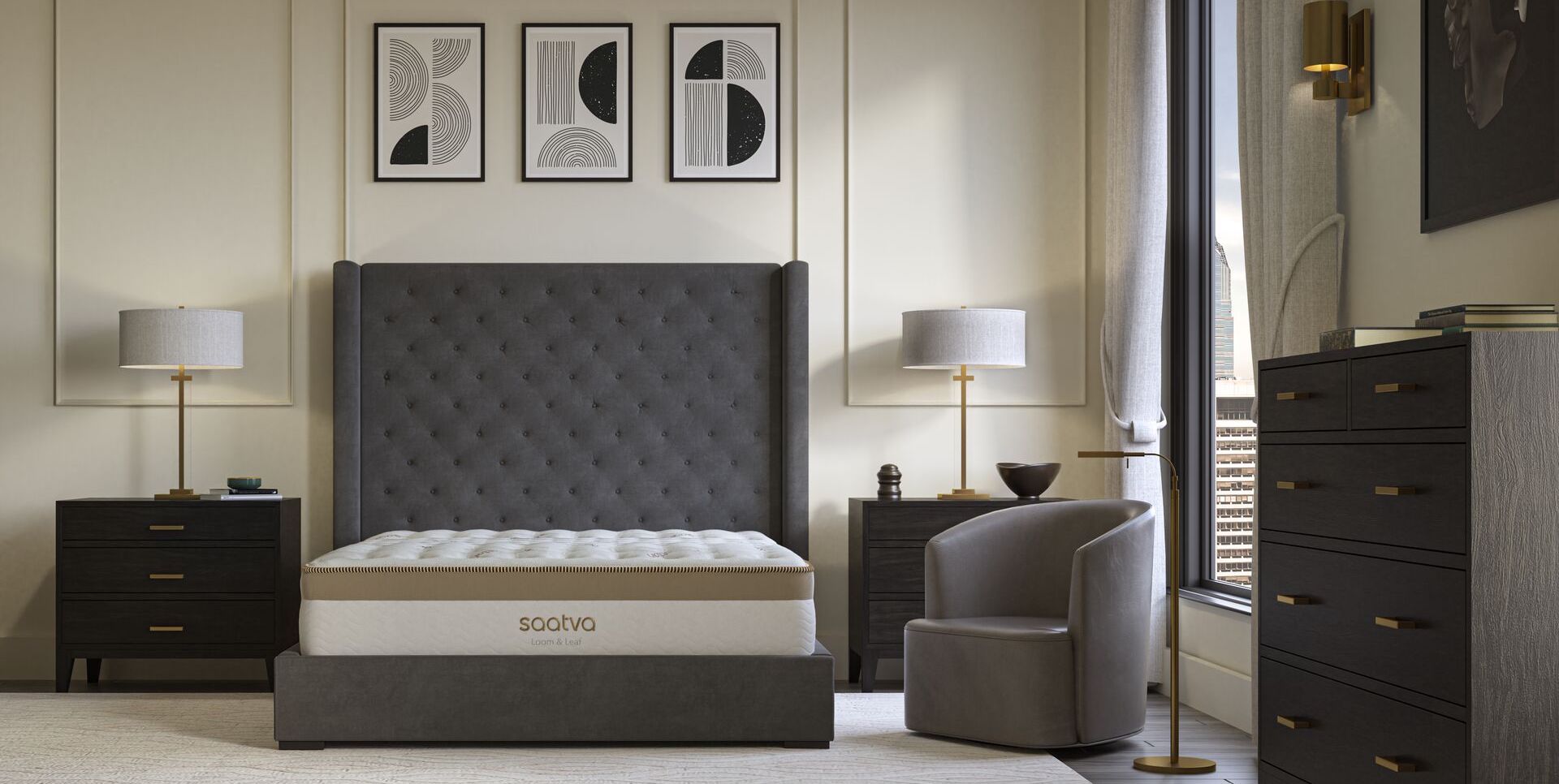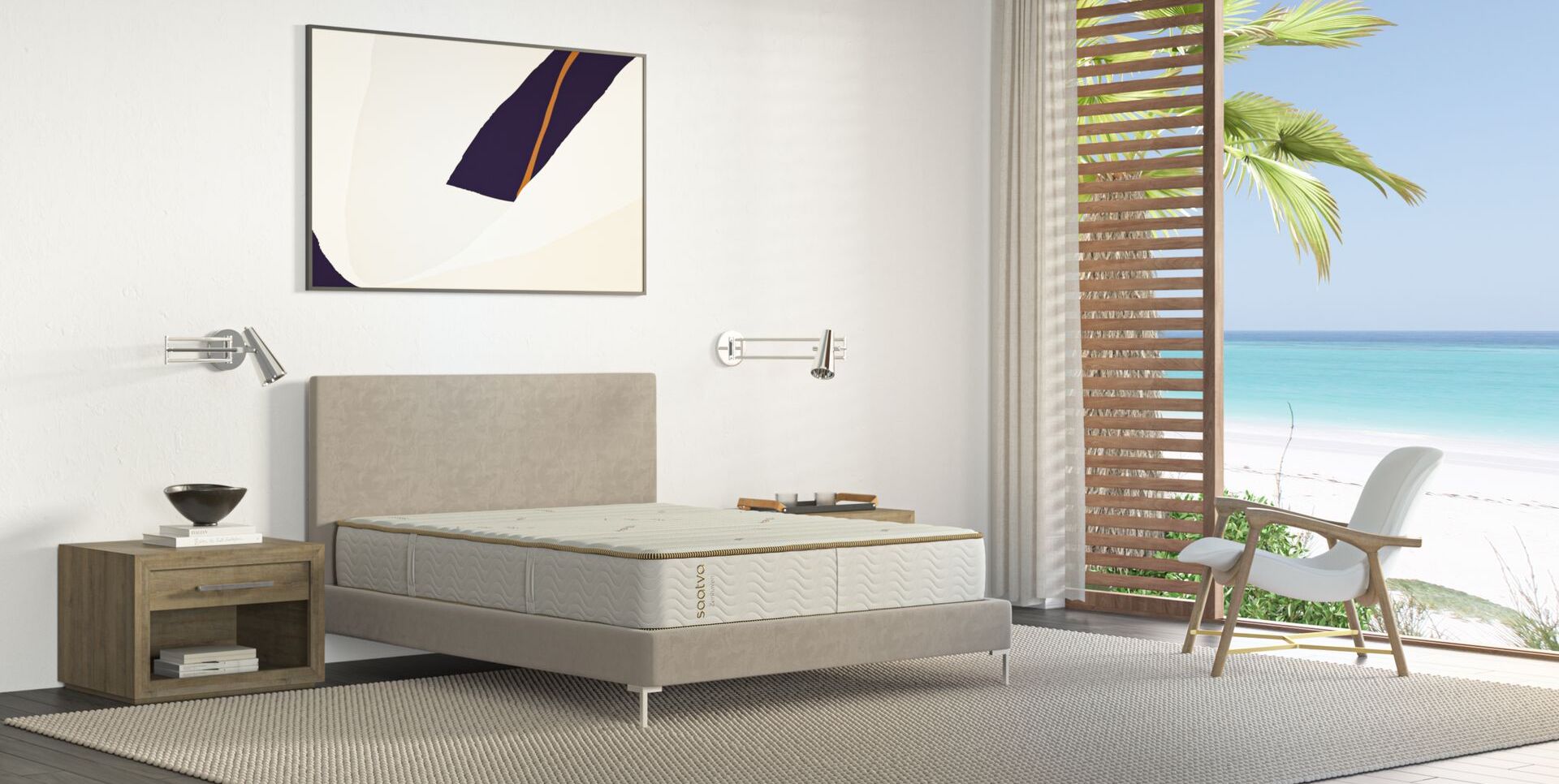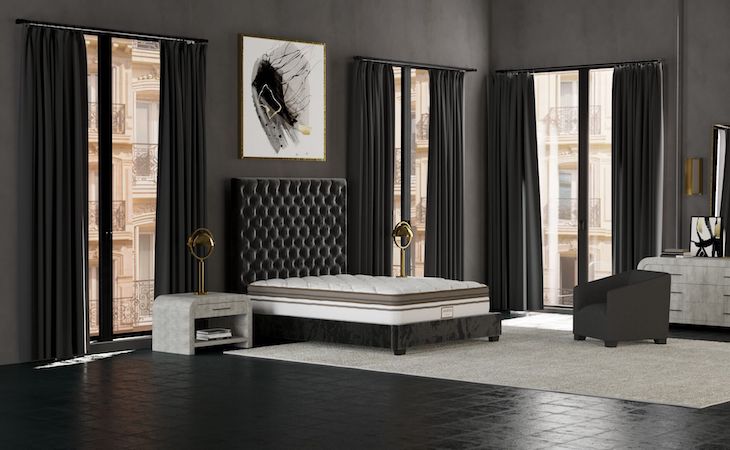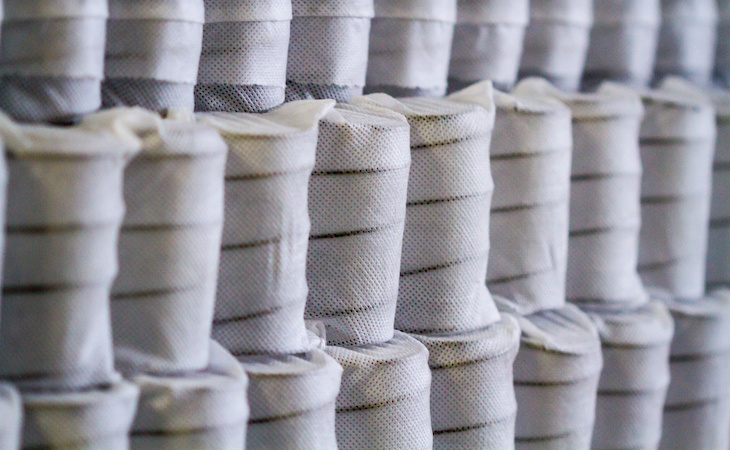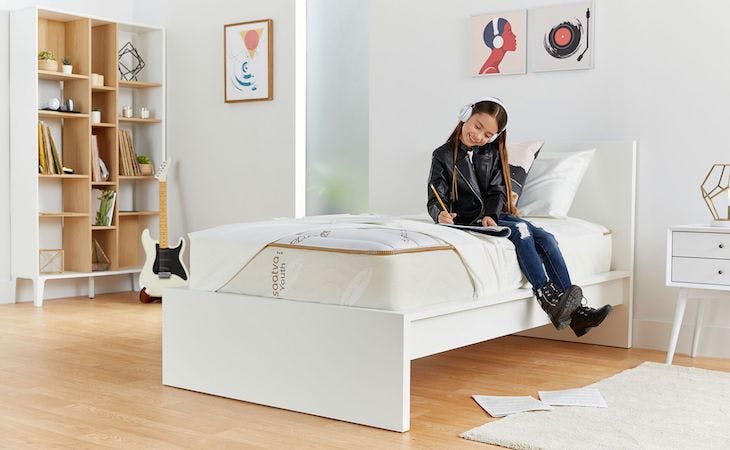Size matters—particularly when you’re shopping for a new mattress. Twin mattresses and queen beds are both popular mattress sizes but for very different reasons.
One—the twin bed—is ideal for very small bedrooms and primarily used in kids’ rooms, while the other—the queen-size mattress—is a great option for couples and those with larger bedrooms.
Is a twin-size mattress or a queen-size mattress right for you? Our twin bed vs. queen guide will help you determine just that.
Twin mattress size
A twin mattress (also known as a single bed) measures 38 x 75 inches. A twin mattress size is considerably narrower than a full-size mattress, which measures 54 x 75 inches. It’s also shorter than a twin XL mattress, which measures 38 x 80 inches.
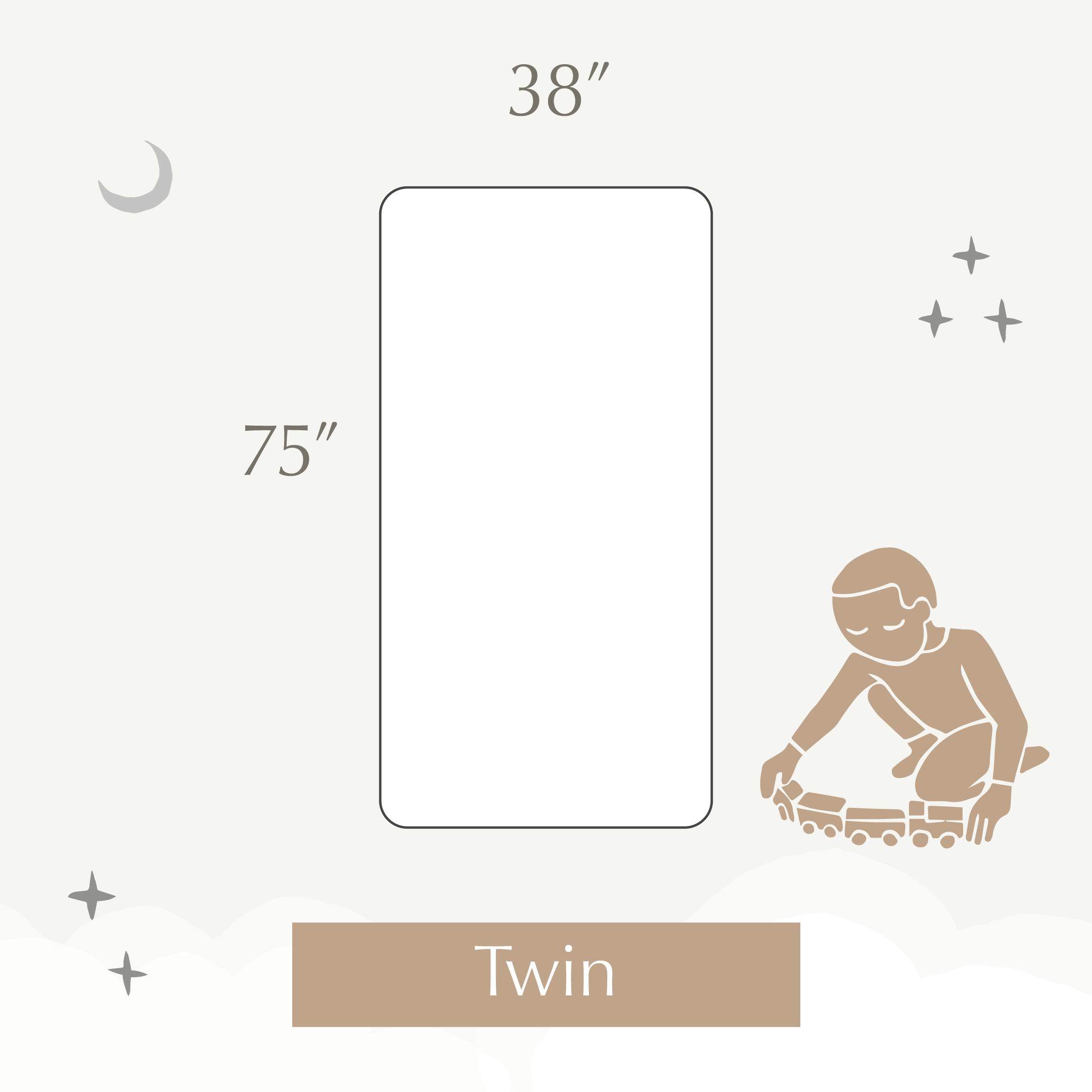
Pros of a twin
When would a twin mattress make more sense than a queen-size bed? Here are the top four reasons to choose a twin vs. queen:
- A twin mattress is great for growing children. It’s an ideal size between toddler beds and the full-size mattress they may use as teenagers. It also fits nicely into kids’ rooms. “Twin beds are so fantastic for kids’ rooms because you don’t need much space for them,” says Prudence Bailey, founder and principal designer of Prudence Home + Design in Connecticut. “They can function as a bed or even a day bed.”
- Bailey adds that having two twin mattresses in a room is perfect for kids who love throwing sleepovers—or siblings who share a bedroom.
- A twin mattress size is versatile—it can be used in bunk beds, day beds, and for solo sleepers in studio apartments. (Keep in mind, your bedroom should be 7 feet by 10 feet at minimum to fit a twin-size mattress.)
- Since a twin mattress is the smallest mattress size, it naturally comes with the smallest price tag and it’s a piece of cake to move.
Cons of a twin
Of course, a twin mattress isn’t without its drawbacks. Here are the biggest downsides to this mattress size:
- It’s too small for two. Given that a twin mattress is only 38 inches in width total, it doesn’t afford much space for two people. A queen-size bed, which measures 60 x 80 inches, is the ideal mattress size for couples because each sleeper gets about 30 inches of space to themselves.
- Because it’s only 75 inches long (which translates to 6 feet 2 inches), a twin-size mattress may not be long enough for taller teens or adults. If you’re over 6 feet tall, or you suspect your teen will grow, a twin XL might be a better option because it offers an additional 5 inches in length. “Twin beds feel small for most adults, so they are a much better option for children,” says Bailey.
Queen mattress size
At 60 by 80 inches, a queen is not as large as a king-size bed (which measures 76 x 80 inches), but it’s still pretty roomy.
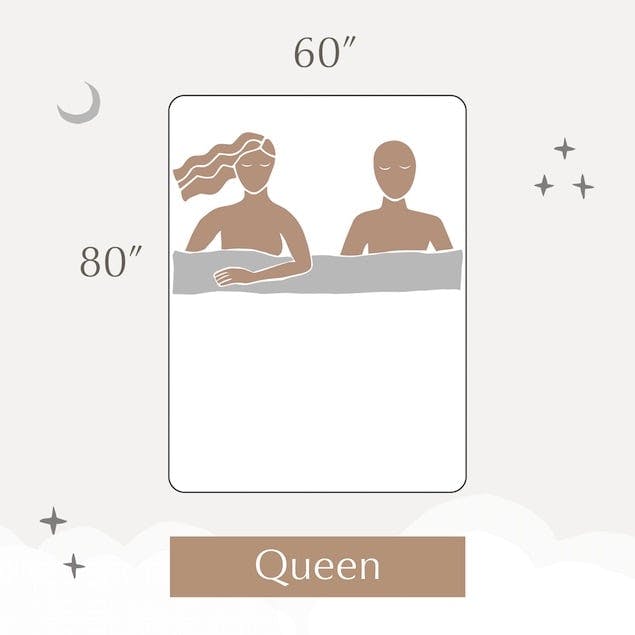
Pros of a queen
A queen-size bed has a lot of things going for it. Here are the top three reasons you should choose one over a twin-size bed:
- It’s versatile, making it an outstanding option for couples and solo sleepers alike. Each sleeper gets about 30 inches of space to themselves. This gives couples plenty of room to move around. If you’re a combination sleeper—someone who switches positions throughout the night—you should have enough room in a queen-size bed so you won’t disturb your partner.
- You’ll have enough room for kids and pets as well. Although a queen-size mattress isn’t quite as large as a king, you should still comfortably be able to snuggle with your family.
- There’s more legroom than a twin-size bed. Because queen-size beds are longer than twin-size beds, they’re a better option for tall sleepers. Remember: A queen-size bed is 80 inches long (roughly 6 feet 8 inches), while a twin-size bed is 75 inches long, which is barely more than 6 feet in length.
Cons of a queen
To be honest, there aren’t a ton of drawbacks when it comes to a queen-size bed, but here are a couple of points to consider before buying one:
- Naturally, a queen-size bed doesn’t offer as much room for couples and/or families as a king-size bed. You’ll have 8 inches less width in a queen-size bed than you would in a king.
- If you have a very small bedroom, a queen-size bed is still sizable enough to cramp your space. You should only choose a queen-size mattress if your bedroom is at minimum, 10 feet by 10 feet.
Is a twin or queen right for you?
The biggest difference between a twin bed vs. queen bed? The size, of course. A twin-size mattress is 22 inches narrower and 5 inches shorter than a queen-size mattress.
Beyond that major difference, there are a few others to be aware of before buying a new bed. We’ve put together this handy comparison chart to help make your choice between the two easier.
Comparison Twin Queen Width 38″ 60″ Length 75″ 80″ Min. recommended room size 7′ x 10′ 10′ x 10′ Who it’s best for Young children
Adults with very small bedroomsCouples
Solo sleepers who want a generous amount of space to move aroundDrawbacks Not enough room for couples Too large for small bedrooms
FAQs
How much bigger is a queen than a twin?
A queen-size bed is 22 inches wider and 5 inches longer than a twin. Measuring 60 inches wide by 80 inches long, a queen-size bed is ideal for couples.
A twin, which measures 38 inches wide by 75 inches long, on the other hand, is best suited to children or adults with very small bedrooms.
Is a queen bed just two twins?
A queen bed isn’t two twins put together. If you put two twins next to each other, you’d get a bed that measured 76 inches wide by 75 inches long.
A queen-size bed, on the other hand, measures 60 inches wide by 80 inches long. Two twins would be wider, but shorter, than a queen.
What is the difference between a twin and a queen?
A twin-size mattress measures 38 inches wide by 75 inches long, while a queen-size mattress measures 60 inches wide by 80 inches long.
A twin bed is ideal for children or adults with small bedrooms, while a queen bed is perfect for couples or adults with large bedrooms.
Is a queen the same size as a twin?
A queen isn’t the same size as a twin—in fact, it’s much larger. A queen measures 60 inches wide by 80 inches long, while a twin measures 38 inches wide by 75 inches long. That means a queen is 22 inches wider and 5 inches longer than a twin.
Find the best twin and queen mattresses at Saatva
Saatva offers a wide range of high-quality twin-size and queen-size mattresses so you can easily find your perfect match, whether you’re shopping for your child, yourself, or you and your partner.
All of our mattresses are handcrafted with premium materials to help you experience your most comfortable sleep. Plus, our mattresses come with a 365-night home trial and lifetime warranty.
Take our mattress quiz to find out which Saatva mattress is right for you.






